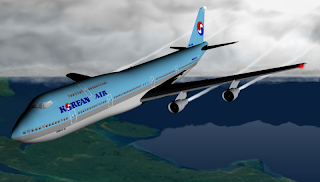
Mayday (also known as Air Emergency in the United States, and Air Crash Investigation in the United Kingdom and other parts of the world) is a documentation television program produced by Cineflix in Canada. It is aired on Discovery Channel and National Geographic Channel. This documentary investigates many air crashes in modern history after the introduction of the black box flight recorders. It reveals events that led up to each disaster, the causes of the accidents and the measures recommended in the report by the NTSB (National Transportation Safety Board) or the investigating Commission to prevent a similar incident happening again. It features re-enactments, interviews, testimony, computer-generated imagery, and in some episodes, CVR or Cockpit Voice Recordings to reconstruct the sequence of events to the audiences.
United Airlines flight 811 - Explosive decompression.
Air Transat flight 236 - An A330 became a glider when ran out of fuel due to a leak.
Swiss Air flight 111 - In-flight fire, subsequent instrument failure.
Aeroperu flight 603 - Crashed due to maintenance error.
Alaska Airlines flight 261- T-tail stabilizer malfunction.
Season 2
British Airways flight 5390 - explosive decompression.
Atlantic Southeast Airlines flight 529 - metal fatigue on its engine.
Air France flight 8969 - An Airbus A300 hijacked in Algeria.
Bashkirian Airlines flight 2937 and DHL flight 611 - Mid-air collision.
American Airlines flight 965 - crashed into a mountain in Columbia.
Avianca flight 052 - Boeing 707 ran out of fuel crashed over New York.
Season 3
Aloha Airlines flight 243 - A Boeing 737 explosive decompression.
Japan Airlines flight 123 - explosive decompression and lost of hydraulics.
Fed EX flight 705 - a suicide hijacked attempt.
Iran Air flight 655 - mistakenly identified as a hostile aircraft.
Philippine Airlines flight 434 - a bomb exploded on board.
Bristow 56C - a Helicopter struck by lighting and looses control.
Egypt Air flight 990 - a Boeing 767 plunges down towards the sea.
Aeroflot flight 593 - an Airbus A310 crashed when a 15 year old accidentally disconnected the planes autopilot.
Ethiopian Airlines flight 961 - a Boeing 767 hijacked and ran out of fuel in mid-air and crashed in the comoros islands.
Season 4
Air France flight 358 - an A340 overshots the runway.
British Airways flight 009 - a Boeing 747 lost power on its 4 engines.
Air Canada flight 797 - an inflight fire on a DC-9.
Korean Air flight 801 - a B747-3B5 crashed in Guam.
Hidden Danger - 3 Boeing 737 incidents. (United flight 585, US air flight 427, Eastwinds 517)
China Airlines flight 006 - a Boeing 747SP plunges towards the Pacific Ocean.
Aeromexico flight 498 - a DC-9 collides with a small plane in California.
USAF CT-43 - a specialized B737 crashed into a hill in Dubrovnick, Croatia.
Flash Airlines flight 604 - a desperate dive of a B737 and crashed into the rad sea.
Helios Airways flight 522 - pilot incapaticipation due to gradual decompression.
special episodes
Ripped Apart - explosives decompression.
Fatal Fixed - Maintenance and failures.
Who's Flying the Plane? - behavior of a pilot and failures of instruments.












